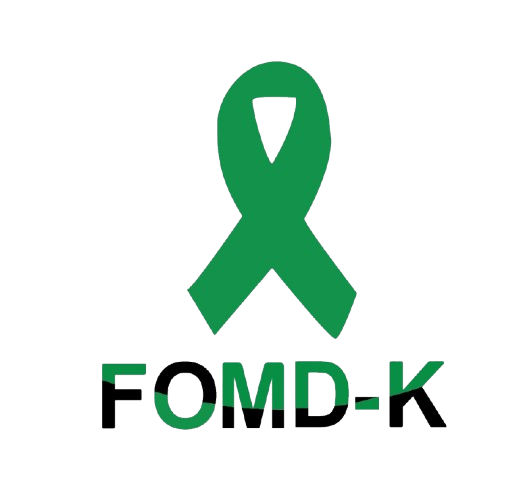Welcome to our community
Friends of Muscular Dystrophy Kenya (FOMDK) supports individuals and families affected by muscular dystrophy through healthcare, emotional support, and awareness. We aim to improve lives, promote inclusion, and advocate for research, all with compassion and integrity.

Testimonials
FAQS
WHAT IS MD & DMD?
Muscular Dystrophy (MD)
Muscular dystrophy (MD) is a group of genetic disorders that cause progressive muscle weakness and loss. It occurs due to mutations in genes responsible for muscle structure and function. Over time, the muscles weaken, making it difficult to move, breathe, or even swallow. There are different types of MD, each affecting different muscle groups and progressing at different rates.
Duchenne Muscular Dystrophy (DMD)
Duchenne Muscular Dystrophy (DMD) is the most common and severe form of muscular dystrophy, primarily affecting boys. It is caused by a mutation in the DMD gene, which prevents the production of dystrophin, a protein needed for muscle strength and function.
Key Facts About DMD:
- Genetic Cause: Caused by mutations in the DMD gene on the X chromosome. Since males have only one X chromosome, they are more affected.
- Symptoms:
- Muscle weakness begins in early childhood (ages 2-5).
- Difficulty walking, running, and climbing stairs.
- Enlarged calf muscles due to muscle damage.
- Progressive loss of mobility, leading to wheelchair use (often by age 12).
- Breathing and heart problems in later stages.
- Progression: Worsens over time, eventually affecting the heart and respiratory muscles.
- Treatment:
- No cure, but treatments like steroids, physical therapy, and assistive devices can help manage symptoms.
- Some gene therapy and experimental treatments are being researched.
- Life Expectancy: With medical advancements, many individuals with DMD live into their 20s or 30s, though complications can arise earlier.
WHAT ARE THE EARLY SIGNS AND SYMPTOMS OF DMD?
Duchenne Muscular Dystrophy (DMD) symptoms usually appear between ages 2 and 5. Since it primarily affects muscle strength and function, early signs often involve delayed motor skills and muscle weakness.
Common Early Symptoms:
- Delayed Milestones
- Late walking (after 18 months)
- Difficulty running or jumping compared to peers
- Frequent falling
- Muscle Weakness (especially in the legs and pelvis)
- Struggles to climb stairs
- Trouble standing up from a sitting or lying position
- Waddling gait (swaying side to side while walking)
- Gower’s Sign (Classic Symptom)
- When getting up from the floor, the child uses their hands to “walk up” their legs due to weak leg muscles.
- Enlarged Calf Muscles (Pseudohypertrophy)
- Calves appear large but contain scar tissue and fat instead of strong muscle.
- Fatigue and Weakness
- Tires easily after physical activity
- Struggles to keep up with other children
- Behavioral and Learning Difficulties
- Some boys may have mild speech delays or trouble learning new things.
- Possible attention or behavioral issues (e.g., ADHD-like symptoms).
- Toe Walking or Walking on Tiptoes
- Some children may walk on their toes due to muscle tightness.
IS THERE A CURE FOR DMD?
Currently, there is no cure for Duchenne Muscular Dystrophy (DMD). However, ongoing research and new treatments aim to slow disease progression and improve the quality of life for those affected.
Available Treatments & Management Options
Although there is no cure, several treatments help manage symptoms, slow muscle damage, and improve mobility:
- Medications
- Steroids (Corticosteroids) – Prednisone and Deflazacort can slow muscle degeneration and improve strength.
- Exon Skipping Therapy – Helps some patients by restoring partial dystrophin production.
- Heart Medications – ACE inhibitors or beta-blockers to protect the heart.
- Physical Therapy & Assistive Devices
- Stretching exercises to prevent contractures (joint stiffness).
- Braces, standing frames, and wheelchairs for mobility.
- Breathing support (ventilators) in later stages.
- Gene Therapy & Experimental Treatments
- Elevidys (Delandistrogene moxeparvovec) – A recently approved gene therapy that delivers a micro- mutations.
- Surgery & Other Support
- Corrective surgery for scoliosis or joint issues.
- dystrophin gene, offering hope for slowing progression.
Ongoing clinical trials are testing new gene-editing techniques like CRISPR to correct Cardiac and respiratory care as the disease progresses.
HOW CAN I DONATE TO SUPPORT BOYS WITH DMD IN KENYA?
To support boys with DMD in Kenya, you can donate to FOMDK that is dedicated to assisting individuals affected by DMD condition. Reach out to FOMDK via the contact information provided in the website
HOW CAN I VOLUNTER WITH FOMDK?
To volunteer with the FOMDK which supports boys with DMD in Kenya:
- Visit the Official Website: Navigate to the FOMDK’s official website to explore available volunteer opportunities and understand their specific requirements.
- Contact the Foundation Directly: Reach out via the contact information provided on their website or through their official social media channels. Express your interest in volunteering and inquire about current needs or programs.

